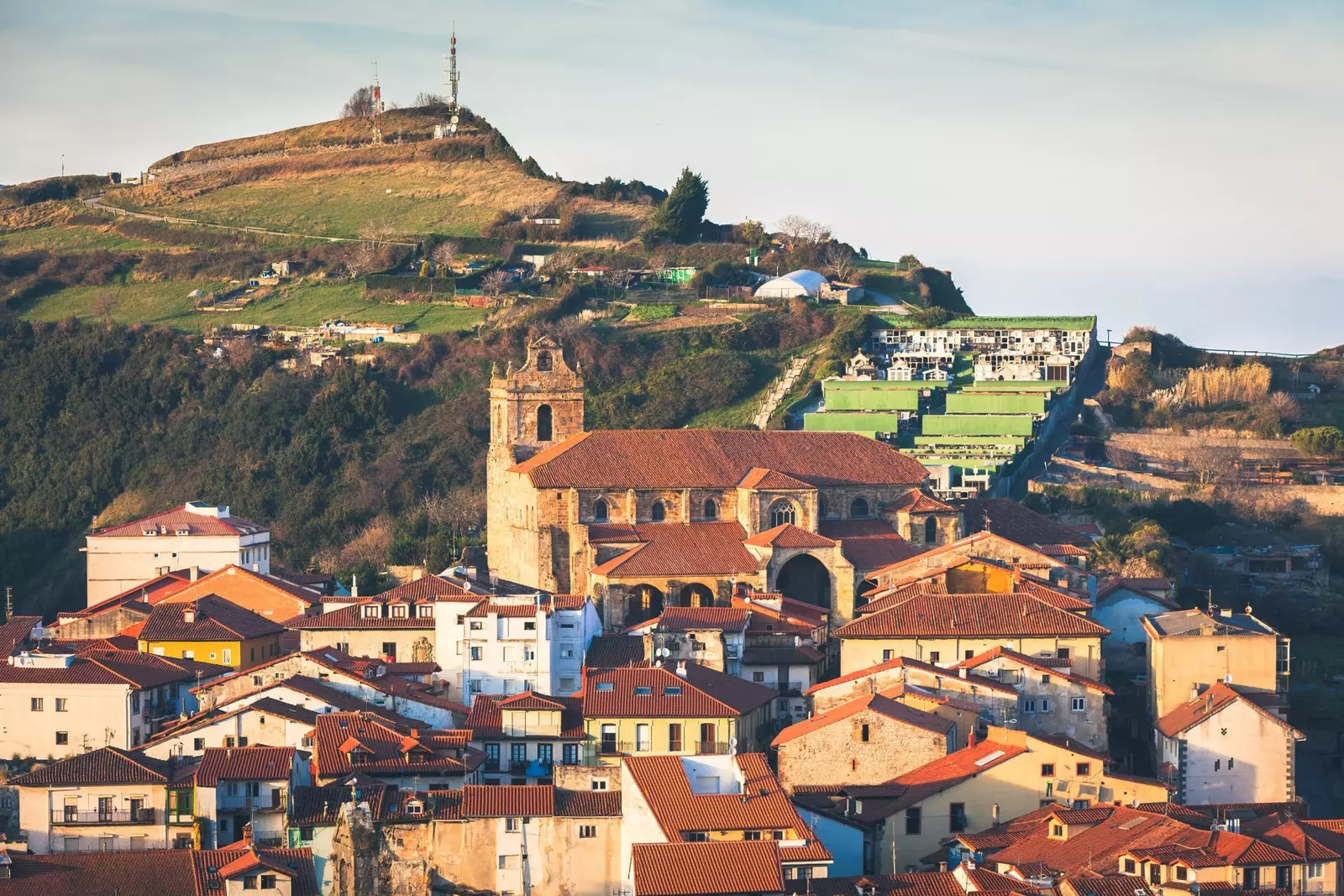
Aerial view of La Puebla Vieja in Laredo, Cantabria.
Once upon a September, at the gates of Cantabrian autumn, when Carlos I of Spain, V of the Holy Roman Empire, landed for the last time in the Royal Port of Laredo returning from Germany to retire in what would be his last resting place, the Yuste Monastery.
His court went with him, maybe even Francés de Zuñiga alias 'el Francesillo', his buffoon, precursor of the grotesque as a literary genre, or perhaps he had already expelled him from that very court for going overboard with his corrosive humor.
Laredo, declared a royal port in 1496, the date on which Doña Juan de Castilla (Juana la Loca) embarked for Flanders to marry Felipe de Borgoña (Felipe el Hermoso), commemorates every September the landing of Carlos V, dressing in period clothing and representing the historical moment in an authentic display of creativity.
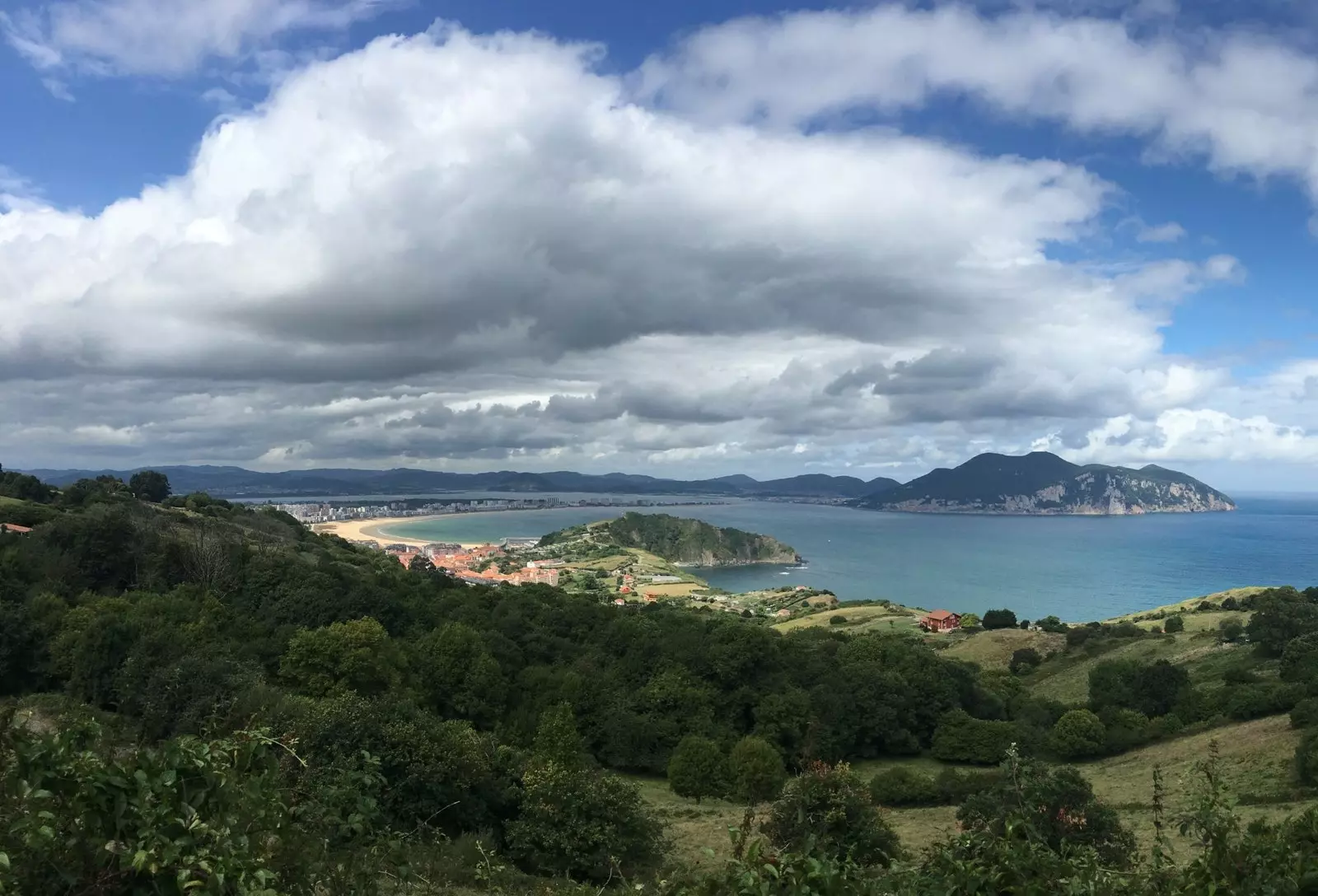
The longest beach in Cantabria is in Laredo.
SURF AND ANCHOVIES
The coastal town of Laredo still has that vintage air who sits in the Capuchín and Carlos V squares, which honor him with his statue, and in its Mercado de Abastos, modernist in style and somewhat eclectic in character, where, by the way, those **blueberries that recently carpeted the land are already sold Cantabrian. **
The old town, of medieval origin, nicknamed La Puebla Vieja, was declared a historical-artistic complex in 1970 and zealously guards the church of Santa María de la Asunción, one of the most renowned Gothic temples in Cantabria. La Puebla Vieja also boasts a series of taverns: forced to ask for squid rings or some clams a la marinera before heading towards the port and the marina.
The modern part of Laredo can be reached by walking along its five kilometers of beach, where surf schools and surfers catch waves. Once in El Puntal, as it is familiarly called, It is advisable to get on a barge and cross to Santoña. Fishing and canning town for centuries, It is famous for its anchovies, which can be tasted in one of the restaurants or taverns in Plaça de la Concordia, such as in the Alberto Tavern or the Asón Sidrería.
Santoña should not be left without take a look at its spectacular marshes, that extend to several municipalities, and to the Romanesque church of Santa María del Puerto from the 13th century. Walking along the Paseo de Pereda you come across the fort of San Martín , and the sadly famous Penal del Dueso can also be guessed.
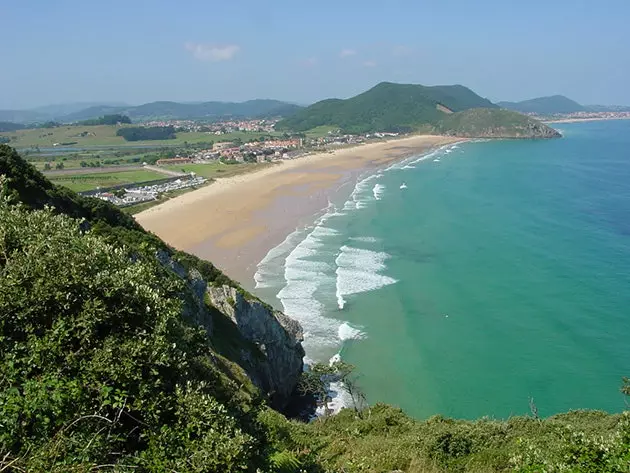
Berria beach in Santoña (Cantabria).
INLAND SURPRISES
Following the route of Carlos V, inland appears the town of Limpias. Your parador is the ideal place to make a stop along the way and spend a night in what was the palace of the Counts of Eguilior, surrounded by beautiful gardens. Not without first paying homage to the famous Cristo de Limpias in the church of San Pedro, the work of the sculptor Montañés and round off the visit by drinking that chocolate with croutons typical of the town in any of its cafeterias.
Ampuero has a nice town center and a festive soul that drives him to organize parties of all kinds throughout the year. Restaurants such as Las Peñas or El Pereda testify to its excellent gastronomy. The Cantabrian town boasts a Michelin star for its La Solana restaurant, located at the top of the Brown neighborhood, where stands the Sanctuary of La Virgen de la Bien Aparecida, patron saint of Cantabria since 1905.
Udalla is disputed by Ampuero and Rasines. And it is not surprising, then years ago this Cantabrian treasure was proclaimed a Town of Cantabria for its Indian mansions, rural houses, for its Templar church of Santa Marina, declared a Site of Cultural Interest in 1984, and for the excellence of its landscape through which the river Asón flows bordered by willows. A river that offers a little of everything. Salmon float fresh in its waters waiting for someone to catch them, while canoes, kayaks and other river contraptions await adventurers to take them through the rapids of infinite landscapes in the second most important canoe descent in Spain after the Sella.
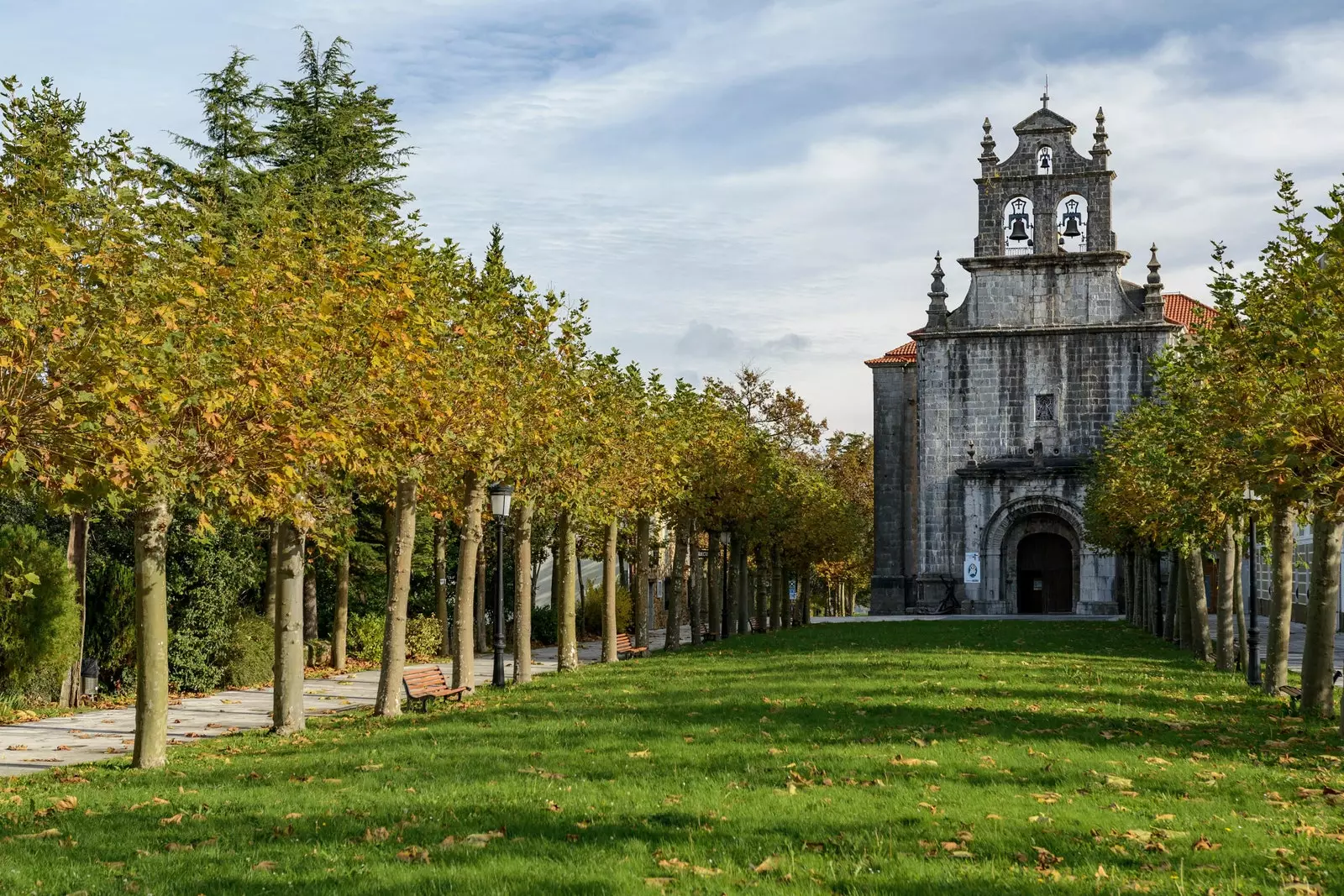
Sanctuary of the Well Appeared, located in Hoz de Marron, Ampuero, Cantabria.
RASINES FALLS IN LOVE
Rasines at first glance seems like a charming and secluded town, just a street, where there are coquettish mountain houses that compete with the geraniums on the balcony, dotted with manor houses and mansions. There is Casa Delfi, restaurant, tavern, coffee, tobacco and shop for everything. And almost next door and newly opened is La Taberna, where you can have a delicious chorizo, potatoes with aioli, delicious ham croquettes and squid rings.
Silence reigns in the town. Its frame is painted by the harvest and the mountain. And yet, Rasines hides much more. Its municipality is 43 kilometers long, populated by different 'neighbourhoods', whose origins date back to the 10th century. In the Middle Ages it was an essential place for the transport of iron and wheat between Biscay and Castile.
Cradle of stonemasons and architects, It has given birth to children of the category of the architect Juan Gil de Hontañón and his son, Juan Gil de Hontañón, el Mozo, builder of the town's parish church, San Andrés. Without forgetting the square bullring of the Santos Mártires –next to the church of San Martín, from the 15th century–, where animals were sacrificed as well as theatrical performances were organized.
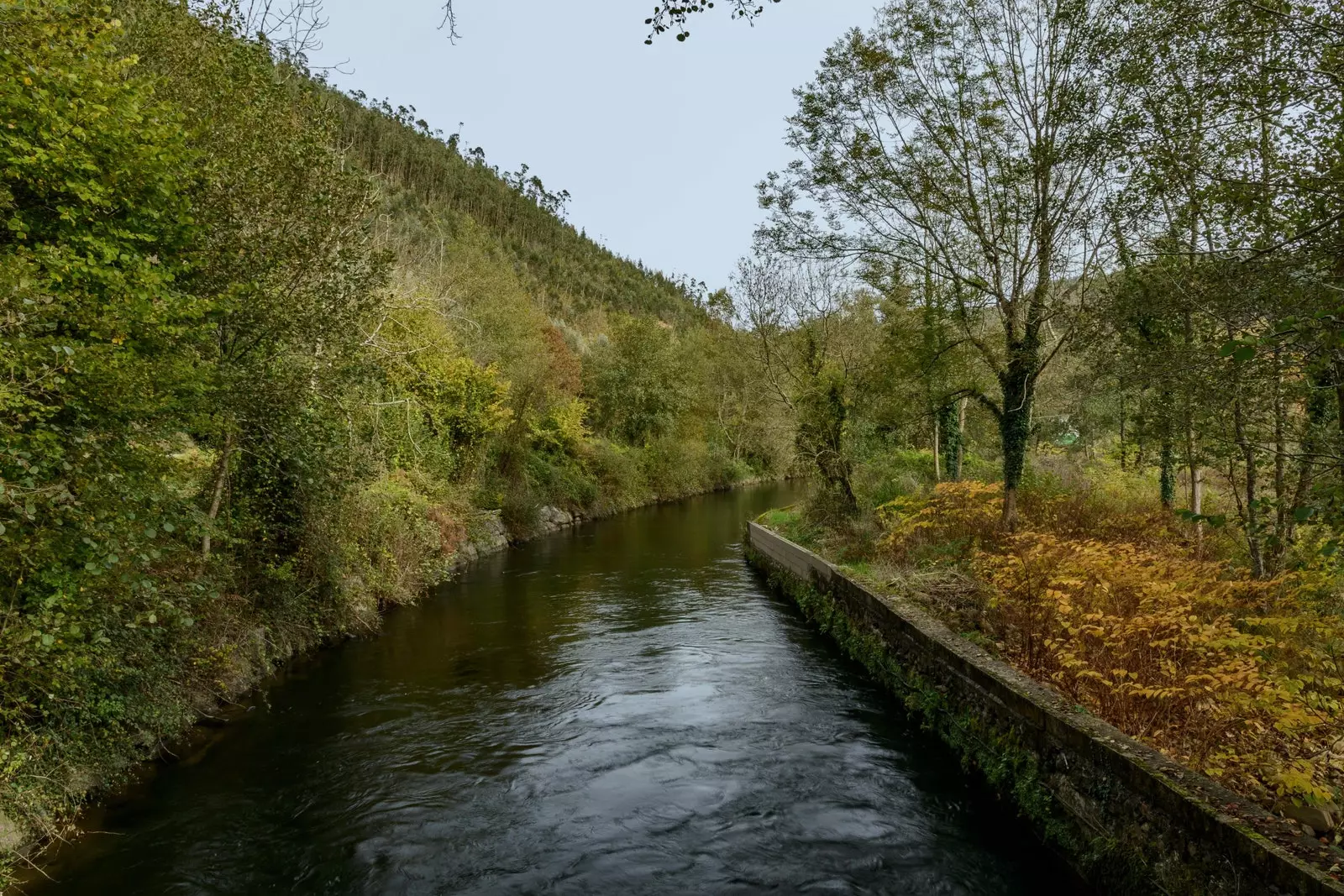
Water channeled into the Asón river as it passes through the town of Udalla, Cantabria.
Rasines falls in love, so much so that the emperor himself Carlos V, on his pilgrimage to Yuste, stayed with the court in the ancestral homes of the La Edilla neighborhood, which among other attractions has a stupendous field of pass bolo, the traditional sport of Cantabria. And not far from the Edilla, there is the Roman bridge with an eye over the Silencio River, which opens the way to the El Molino de Cadalso Posada-Restaurant, with good food, from an excellent turbot to a steak or the tasty mountain stew.
Not being able to stay in the royal mansions of the Edilla, as Carlos V did, a good tip is to stay in the Nordic rooms of La Posada de Ojébar, in the heart of Asón Valley, whose limestone massifs entail a tremendous speleological wealth that distinguishes it as the area of Europe with the most caves per square meter. From there you can hike between beeches and oaks until you reach the Paleolithic Park featuring a huge mammoth that protects the Cueva del Valle, the longest in Europe.
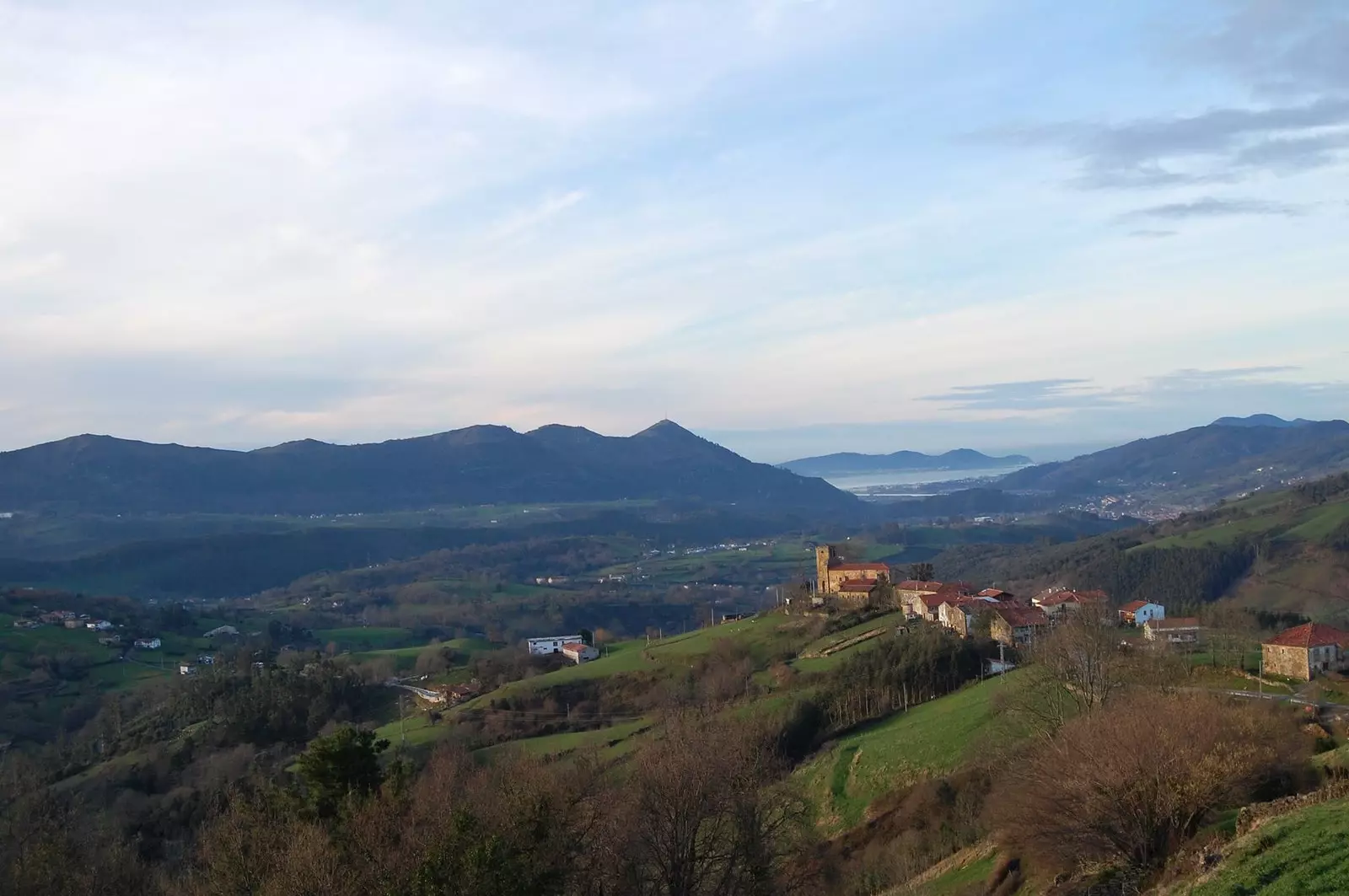
Village of Ojébar, in the heart of the Asón valley, Cantabria.
LIVE THE PLANTATION
However, not everything is historical, paleolithic, old, in Eastern Cantabria. The blueberry is the new crop in the fertile lands of Cantabria and one of its pioneers, Pilar, has a story that deserves to be told. Her roots in Rasines and her great love for that land where her ancestors were born, when she found herself in charge of the family farm La Manzanera, led her to reflect on what to do with it.
“You have to take advantage of the land”, thought Pilar. She considered various possibilities. She would dedicate it to fodder, she would set up a greenhouse... One day, just as things are forged, as if nothing, a close friend of hers told her about the blueberry. What if it is more and more fashionable for its healthy properties and its rich flavor, that yes in the south the harvest is finished before and growing it in the north would be a good complement...
Pilar, who no one can beat as an entrepreneur, informed herself, studied, projected and finally got down to work that today speaks of one cultivated hectare of the four that the farm has, and that will be gradually cultivated, where the main varieties of the fruit –Aurora, Duke and Ochlocknee– are sprinkled perfectly aligned, under the shelter of the mountain nicknamed La Casildona, which informs them of the weather.
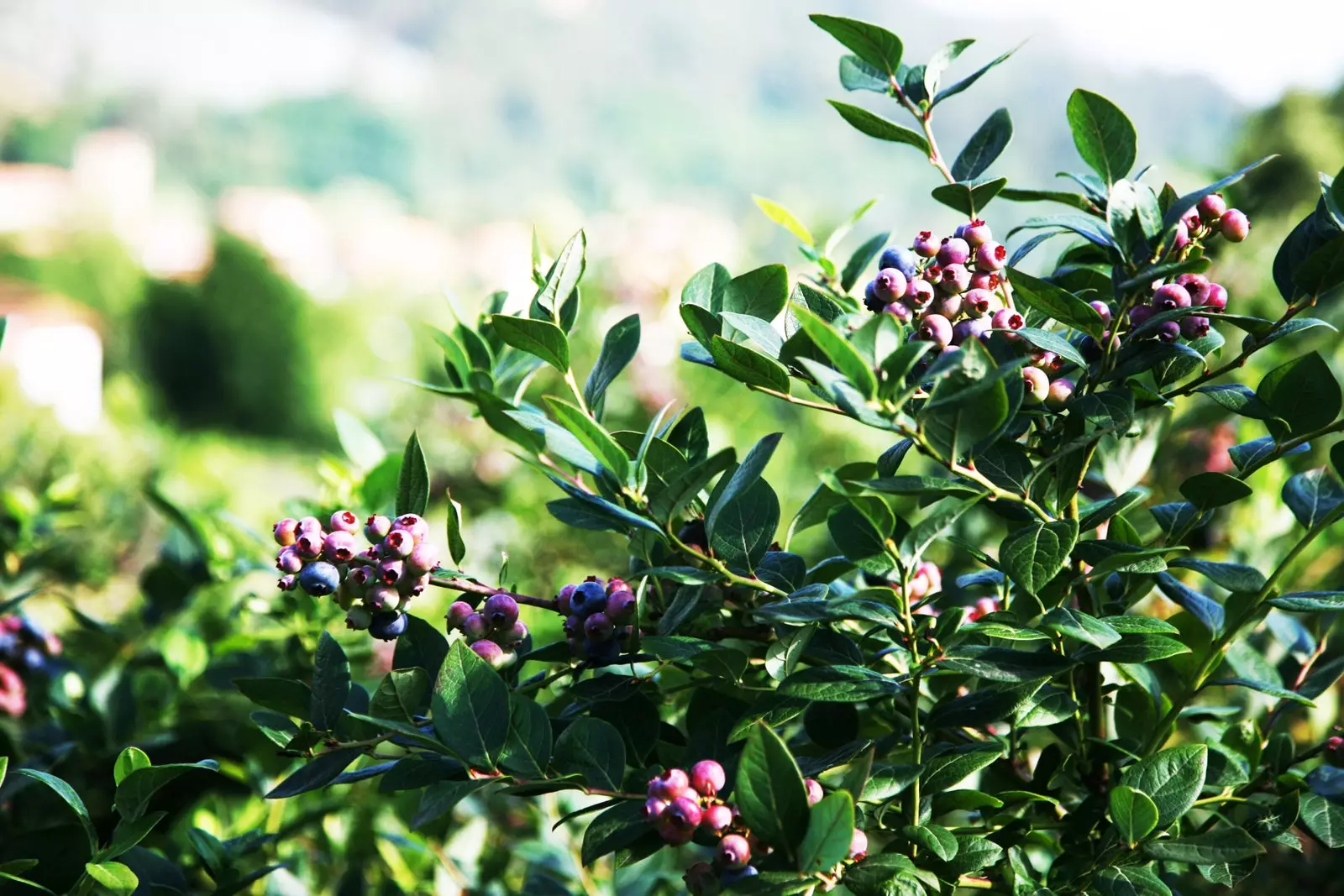
Blueberry plantation in the family farm La Manzanera, Cantabria.
Aranberry, as the company is called, has been on the market for years. Pilar has gone from knowing nothing about the blueberry world to guessing its growth and needs, helped by her essential Humberto, a gallant and hard-working Cuban like few others, and the charismatic Marian, without mincing words, who knows the land, loves it and pampers it. Between all of them, and some more who come to lend a hand at harvest time, they have carried out a beautiful plantation whose fresh fruit comes to market during the harvest while the destrío becomes a delirious blueberry brandy, juice and jam.
The mansion keeps its ancestral presence, that after a wise remodeling has all the comforts of the 21st century to be a magnificent Airbnb and Tripadvisor accommodation where spend the night by the side of La Casildona, which looks out the window, and wake up to the endearing tolon of the cowbells and goats that start the day. A walk through the plantation and it's time to sign up for one of the cultural, sports or gastronomic plans that Cantabria Oriental offers.
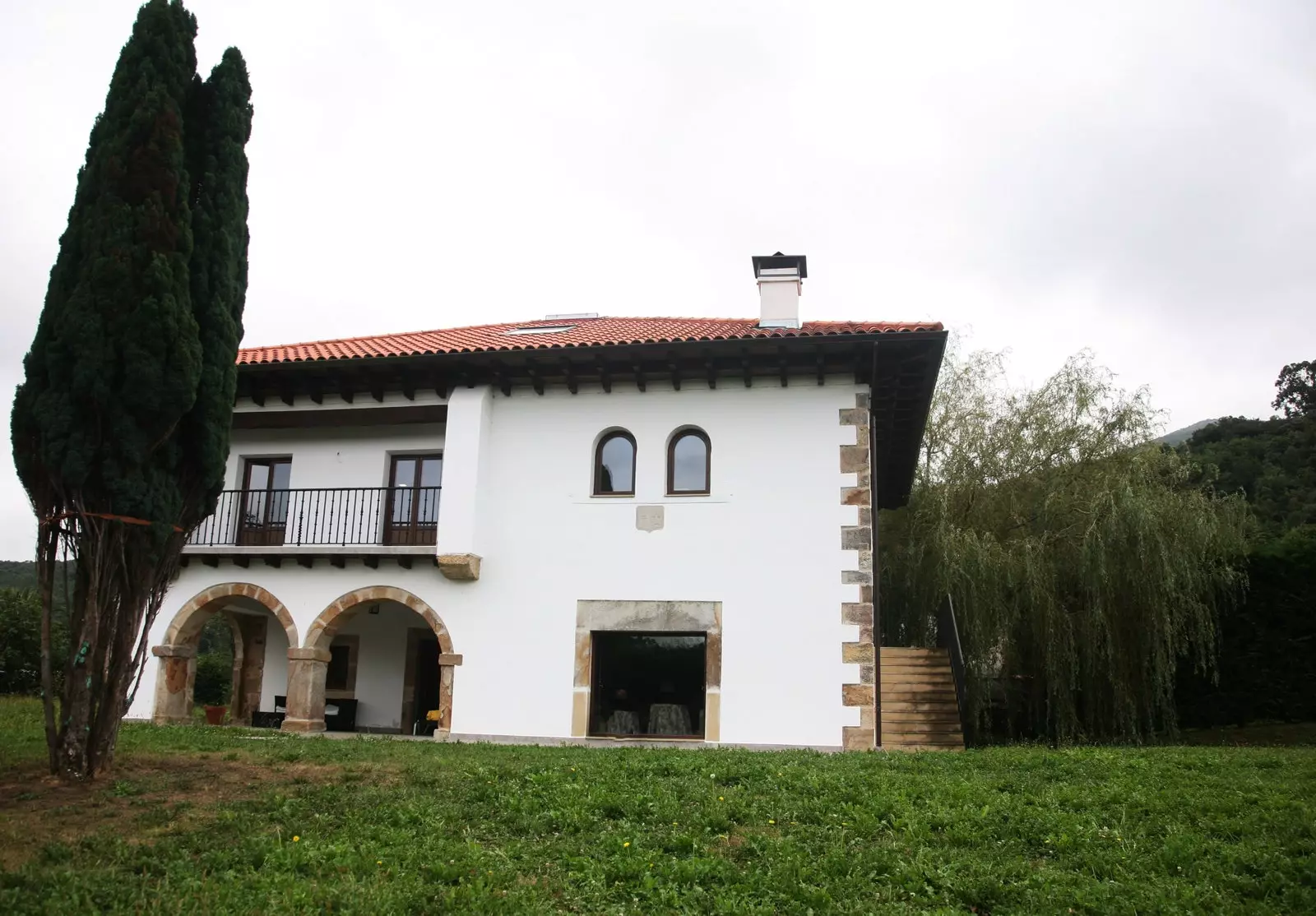
La Casona, a manor house among blueberry plantations in Rasines, Cantabria.
